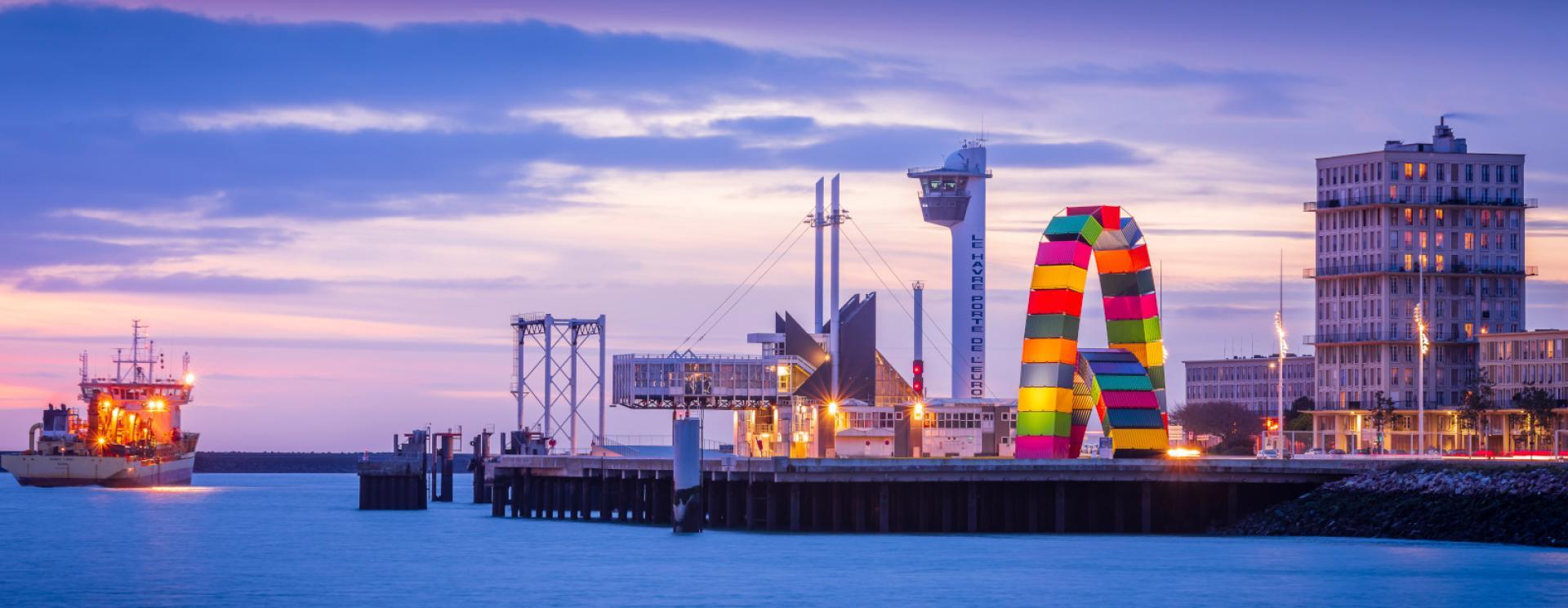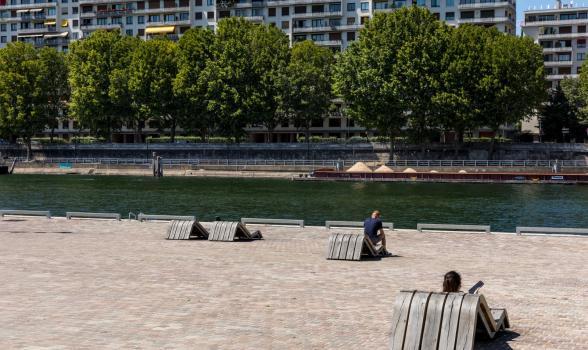- ABOUT US
- CARGO
- A multi-sector focus
- A maritime service offering in the first rank
- An attractive multimodal offering
- An expanded short sea service offering
- Port terminals and shared-use quays
- High-quality ship services
- Fluid, facilitated goods throughput
- A port that puts its performance figures in the public domain
- PASSENGERS
- MULTIMODALITY
- ECOLOGICAL TRANSITION
- INNOVATION

To improve the acceptability of port activities
Published on - Updated
Objective no. 1: to manage port areas sustainably
The development of port areas adheres to four principles:
- reconversion of existing industrial sites (i.e. the “Avoid Reduce Compensate approach” - ARC),
- increased development density to limit soil artificialisation, taking account of the technological and natural risks,
- ensuring improved port integration by enabling a mix of uses and reconciling activities associated with urban logistics, industrial operations and leisure,
- organisation of links between port areas, urban areas and natural areas to provide ecological and landscape continuity.
Taking care to integrate ports with their urban areas
HAROPA PORT endeavours to integrate the ports and their operations into the surrounding urban fabric. The aim is to reconcile port activity and protection of the local human habitat by ensuring a variety of uses, particularly to enable local residents to take advantage of the riverbanks outside normal operating hours. It was with this in mind that lower Javel port was rehabilitated with a reorganisation of the activities that relate to industrial port operations, distribution, tourism, recreation and the sharing of spaces according to timeframe (areas for pedestrians, cyclists and joggers outside normal operating hours).
Objective no. 2: improved control of the impacts of port activities
HAROPA PORT endeavours to ensure that its activities abide by a philosophy based on sustainable management and continuous improvement:
Improved management of dredging operations and the dumping at sea and recycling of dredged material
HAROPA PORT has put in place a system for the management and recycling of dredged sediment for the entire Seine axis with a 10-year horizon. The objectives include improving the dumping of dredged sediment at sea and developing innovative sectors for sediment treatment and recycling.
Virtuous sediment deposits
In order to protect organisms living on the seabed (benthic flora and fauna), HAROPA PORT’s Territorial Departments in Le Havre and Rouen have developed an innovative approach to dumping dredged material: identification of seabed strips and compartments at immersion sites for deposits capable of fostering fauna habitat recolonisation.
This approach goes hand in hand with biological monitoring of the sediment (to ascertain the ecological status of habitats, fauna, water quality, and so on).
Modernisation of sewerage systems and development of environmentally friendly techniques for rainwater management
Modernised sewerage systems
Since 2015, HAROPA PORT has been modernising the sewerage systems at its ports. In the Paris area, the port has invested €14.5m to improve the quality of wastewater discharges and conserve water resources (creation of wastewater management systems and rainwater treatment facilities), especially as part of the "Quality of Water and Bathing" action plan conducted by the regional Prefecture and Paris city authority.
This will allow riverboats and moored business premises to prefer connection to utilities upstream from bathing locations for the 2024 Paris Olympic and Paralympic Games.
Improvement of air quality along the Seine Axis, in addition to the action already taken by the non-profit monitoring bodies Atmo Normandie and AirParif
This objective necessarily involves a port air quality action plan to include programmes such as ESI, which encourages and rewards the most environmentally friendly ships, electrification of maritime terminals, development of vessel drive systems with lower levels of emissions, etc.
Continuous quality improvement at Paris area ports
Signed in 2017, the Port Improvement Charter brings HAROPA PORT together with Paris city authority and actors in the construction and recycling sectors. It commits them to making changes to their methods to foster sustainable development in their waterside operations. This is a continuous improvement approach based on annual audits of each port facility or activity by an independent body (an annual total of 146 audits). The ports also commit to maintaining dialogue at local level with elected representatives and residents.
Reducing dust emissions
HAROPA PORT, silo operators and Atmo Normandie carry out diagnostic activities and programmes for air quality monitoring to place hard limits on emissions of dust and particles from grain-related operations. The aim of this is to mitigate possible harm to local populations. A range of systems derived from this approach are now in place on installations (silos, gantry cranes): covered discharge pits, dust suppression cones, boom heads limiting grain free fall, dust suppression systems based on misting with aqueous solutions (e.g. rapeseed oil) and grain discharge flow velocity restrictors.
